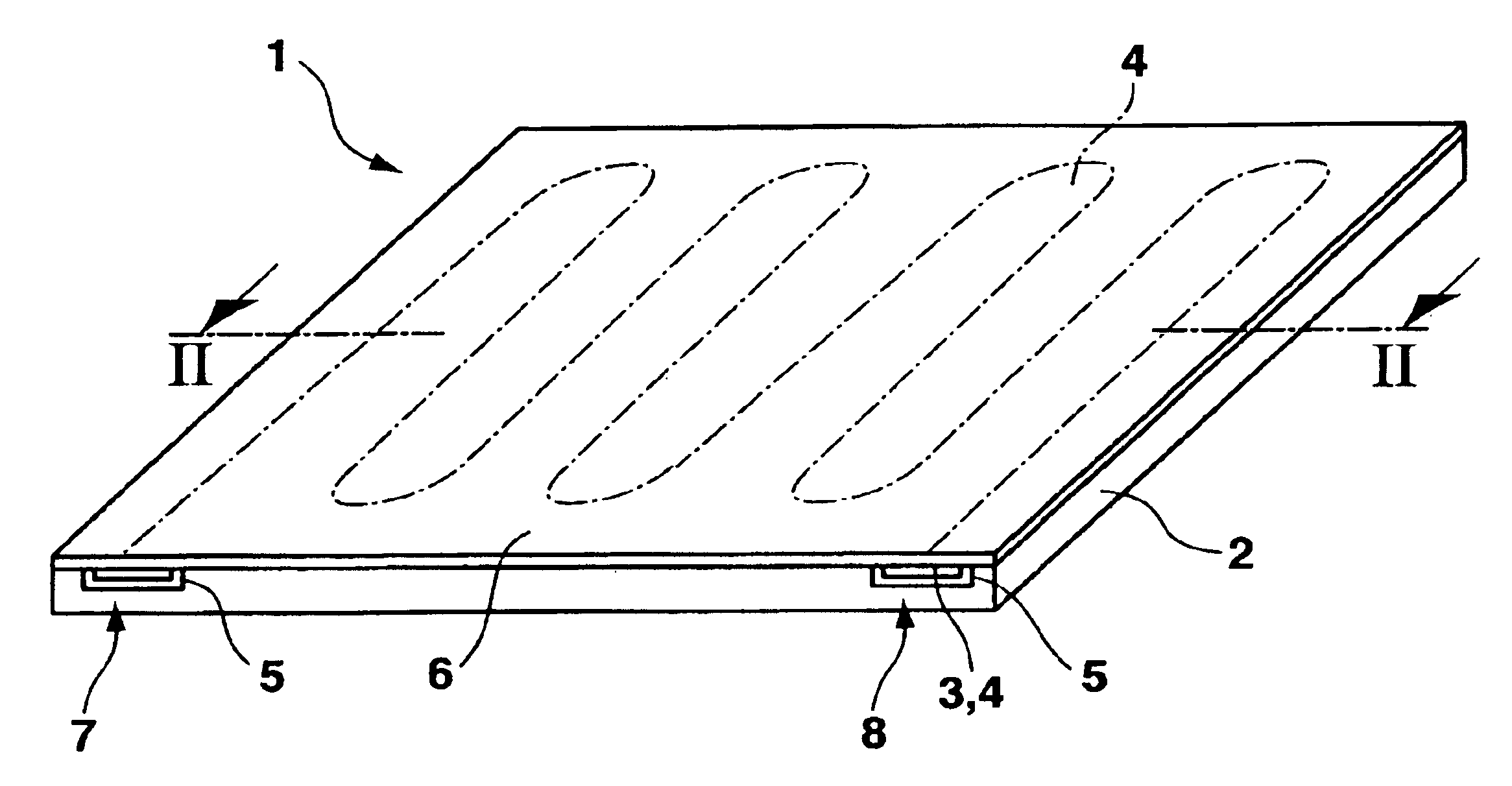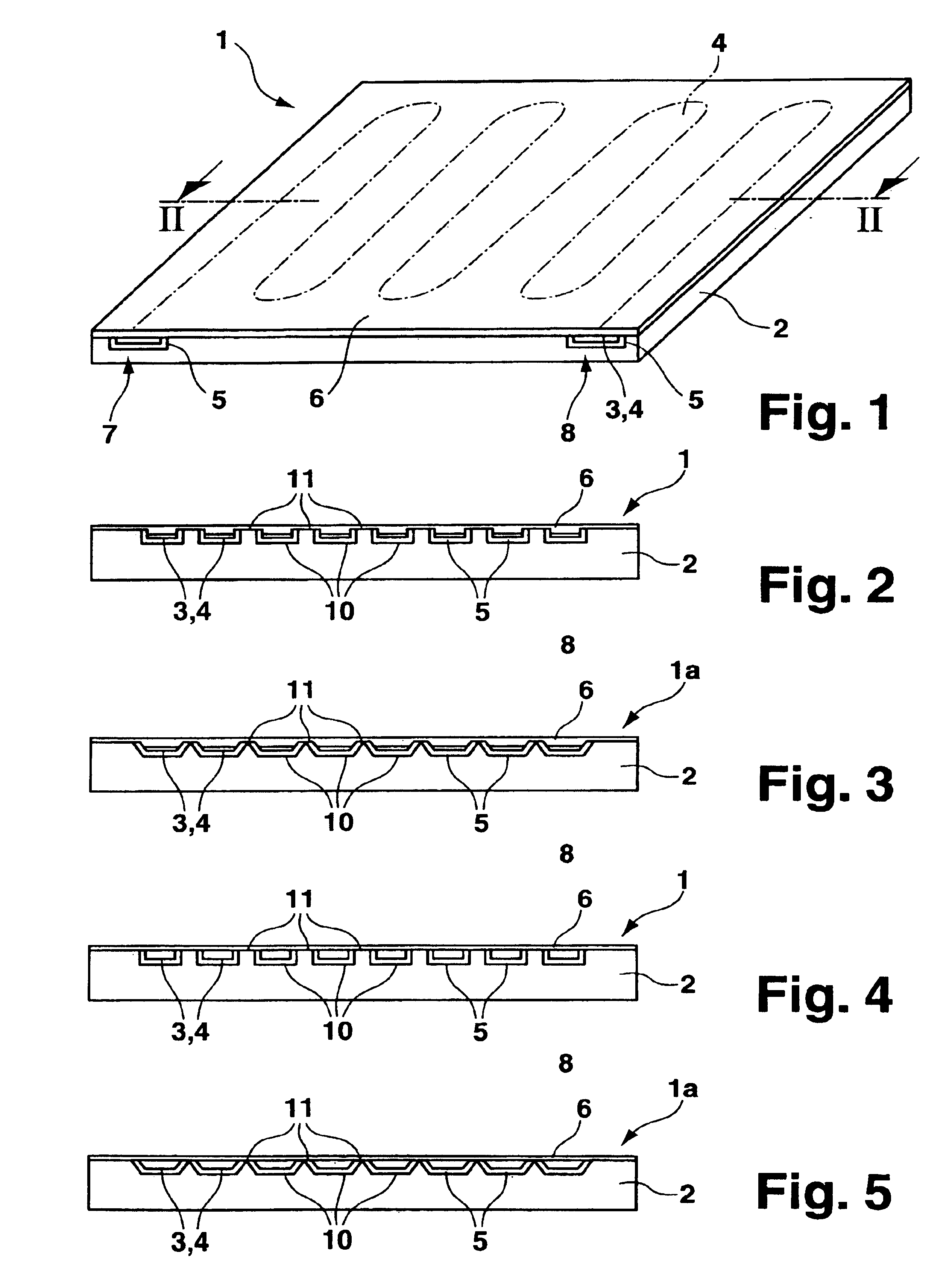Method for producing a resistive heating element
a heating element and resistive technology, applied in the direction of resistors, non-adjustable resistors, carbon-silicon compound conductors, etc., can solve the problems of high precision, time and expense, and difficulty in mechanical processing of flat conducting layers, so as to achieve narrow tolerances, large tolerances, and large tolerances
- Summary
- Abstract
- Description
- Claims
- Application Information
AI Technical Summary
Benefits of technology
Problems solved by technology
Method used
Image
Examples
Embodiment Construction
[0027]FIG. 1 shows an embodiment of an inventive resistive heating element 1. The resistive heating element 1 comprises a substrate 2 which serves as carrier material and which is substantially plate-shaped, e.g. of graphite, and an electrically conducting layer 3 in the form of a, in the present embodiment, meandering conductor path 4 (shown with dash-dotted lines) e.g. of pyrolytic carbon. An insulating layer 5, e.g. of pyrolytic boron nitride is disposed between the substrate 2 and the conducting layer 3 forming the conductor path 4. Moreover, the side of the conducting layer 3 facing away from the substrate 2 is provided with an insulating covering layer 6 for protecting the conductor path 4 from external effects which also consists e.g. of pyrolytic boron nitride. The ends of the conductor path 4 connecting to an outer side of the resistive heating element 1 serve as terminals 7, 8 for applying an electric voltage.
[0028]As shown in FIG. 2, the conductor path 4 is embedded in a ...
PUM
| Property | Measurement | Unit |
|---|---|---|
| thickness | aaaaa | aaaaa |
| temperatures | aaaaa | aaaaa |
| electrically insulating | aaaaa | aaaaa |
Abstract
Description
Claims
Application Information
 Login to View More
Login to View More - R&D
- Intellectual Property
- Life Sciences
- Materials
- Tech Scout
- Unparalleled Data Quality
- Higher Quality Content
- 60% Fewer Hallucinations
Browse by: Latest US Patents, China's latest patents, Technical Efficacy Thesaurus, Application Domain, Technology Topic, Popular Technical Reports.
© 2025 PatSnap. All rights reserved.Legal|Privacy policy|Modern Slavery Act Transparency Statement|Sitemap|About US| Contact US: help@patsnap.com



